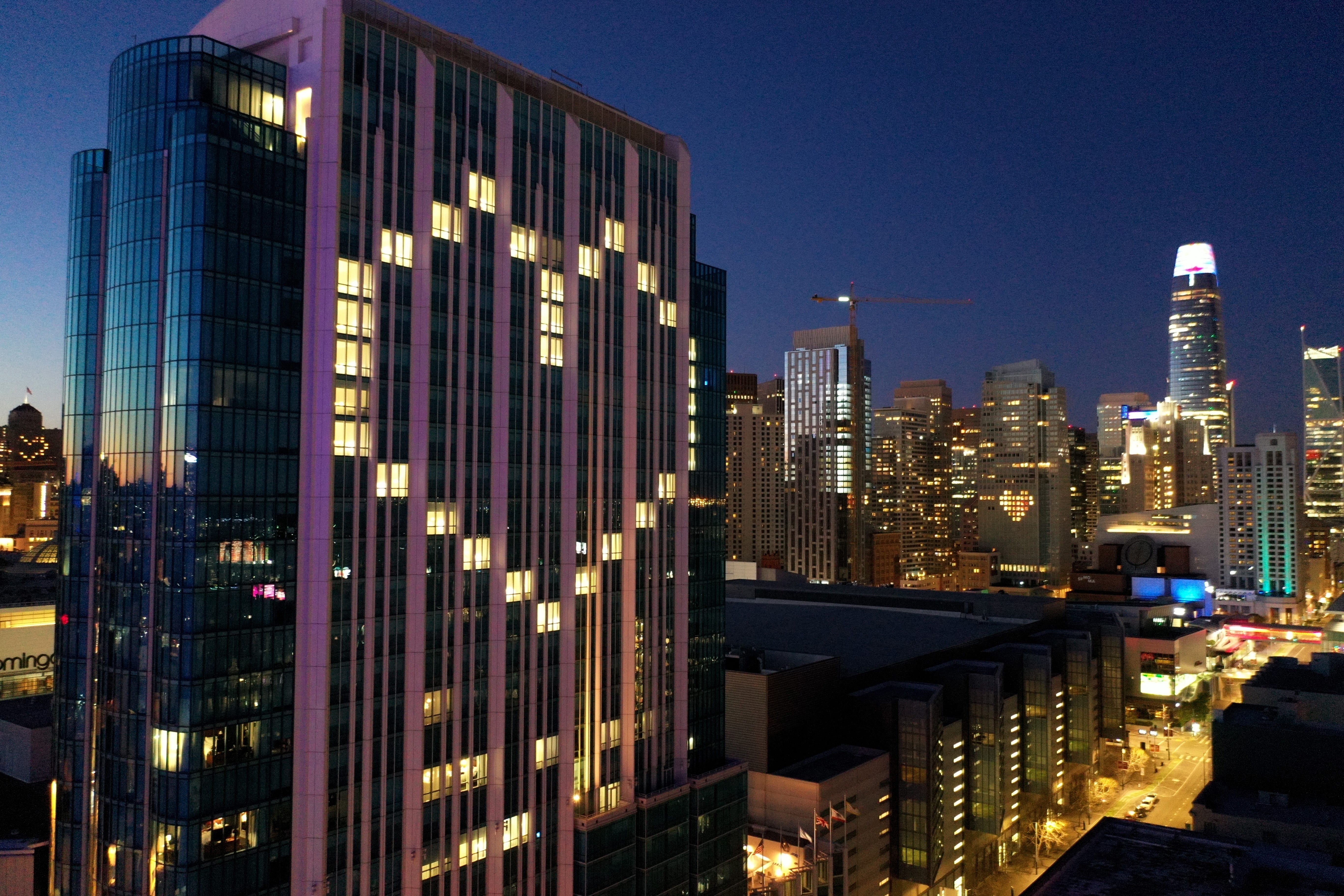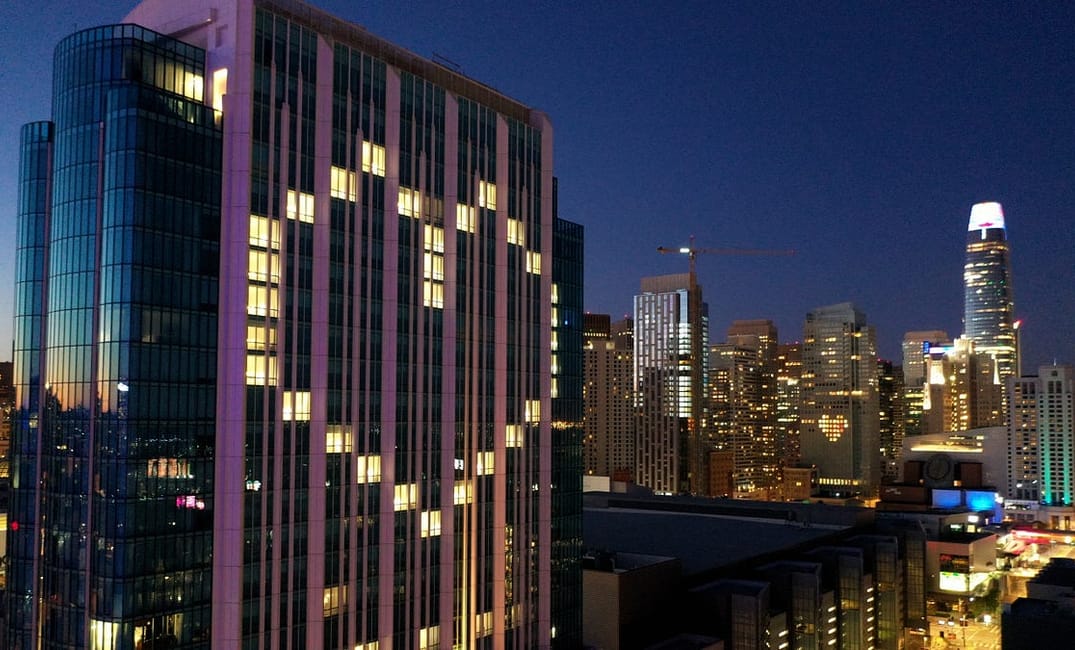
Natives versus transplants. Techies versus artists. Rich versus poor. NIMBYs versus YIMBYs. San Francisco has long seemed so divided, it’s felt like we could never come together.
In many ways, the pandemic has emphasized those fault lines. While most tech workers can maintain healthy salaries while working from home, the service industry has gone up in flames with layoffs, and essential workers — including those who work in public transportation, grocery stores, and hospitals — must still show up to work. Communities of color, especially Latino and Black ones, have been disproportionately affected by Covid-19 as have those who are unhoused. And Asian Americans are facing racist harassment at all levels, even here in the proudly liberal Bay Area.
Sign-up for The Bold Italic newsletter to get the best content about life in the Bay Area in your inbox every week. What could go wrong?
I could argue that San Francisco has never been more divided between the haves and have nots. Yet, at the same time, we are more united than we have been as a community in years.
As a transplant myself, I’ve often straddled many of these divisions uneasily. I’m a Chinese American resident who has lived here for seven years. I’m married to a partner who has spent his entire life in the Bay Area, making that conversation about natives versus newcomers highly personal. I’ve also worked both at tech companies and in the creative and service sectors.
Despite our very real divisions, we’re connecting to help in the era of Covid-19.
I understand why natives like my husband hold disdain for a certain type of tech transplant — I became all too familiar with the “I’m better than you” attitude that tech execs can have, which trickles down into everyday life in the Bay Area. Yet, I also know the impact of stereotyping every newcomer as elitist—as I’ve gotten to know many of my neighbors working as a local news journalist, many are loudly vocal against anyone new (read: people like me) moving into their neighborhood. That blanket hate does not feel good or productive.
This has been the reality for many years. But now, despite our very real divisions, we’re connecting to help in the era of Covid-19. Residents across the Bay Area have mobilized to support each other, volunteering at food banks, going on grocery runs, sewing cloth masks for essential workers, or leaving sourdough starter out for anyone to take. This community spirit has coalesced into grassroots mutual aid networks actively working to connect neighbors who need help with those offering aid.
San Francisco transplants like myself, most of whom work in tech, have been criticized for only seeing the city as a backdrop rather than a community to get involved in. This crisis is proving otherwise, inspiring people from all industries to step up.
Many are new to organizing, like Madeline Su, a 25-year-old product marketer at a tech company. Since the lockdown, she’s one of three people behind SF Community Support, which connects volunteers with those who need help.
When much of the Bay Area shut down on March 16, Su “went onto Nextdoor and Facebook and saw so many people offering their support.” (Many were inspired to help others when Nextdoor added specific features in response to the pandemic.) She wanted to help out too, especially as she had seen the pandemic through the eyes of family members in China.
“I am personally very passionate about community and neighbors,” Su said. “The thing that is so beautiful about neighbors is that we can form a close bond because of proximity.”
She teamed up with two friends to whip up a Google form in half an hour, and almost immediately, the group had more than 200 volunteers ready to go. Today, the group is regularly pairing volunteers and those seeking assistance.
More established groups with deep roots in their communities are stepping in, too, with the ability to connect volunteers online to offline networks, the ones that have grown organically between neighbors who’ve lived in the same neighborhood for decades. These networks are particularly critical for seniors, who are less likely to be online and much more likely to pick up the phone instead.
Take Joanie van Rijn of Resilient Miraloma Park. The group is part of the citywide Neighborhood Empowerment Network, which helps neighborhoods survive times of stress. For the past seven years, van Rijn worked to prepare her neighborhood for crises like earthquakes and heat waves.
“What’s amazing is this outpouring from a large swatch of the community asking how they can help. It reminds me of how much good there is still in the world.”
All of that preparation paid off. Once the shelter-in-place directive came down, the group was able to activate a roster of volunteers that have passed out more than 2,300 flyers, rung doorbells, and spoken with residents (from a safe distance) to keep neighbors informed and check in on who needed help. Now, van Rijn is working to onboard and train what she calls “spontaneous volunteers,” the newer folks who’ve been inspired to help through online platforms like Nextdoor.
“We’re turning these volunteers into an army to help,” said Karl Aguilar of Resilient West Portal, van Rijn’s counterpart for his neighborhood.
I also spoke with Paige Wheeler-Fleury, one of the two organizers behind mutual aid group Oakland at Risk. We connected after she had just finished delivering groceries. The group launched in mid-March, yet it’s already one of the East Bay’s most high-profile organizations — on the day we talked, Oakland at Risk had 700 volunteers willing to offer aid.
She thinks these groups are rapidly becoming a way to create stronger communities, especially when many people don’t know their neighbors. In one instance, she connected two people who live 300 feet away from each other on the same street: one resident who needed help and the other a volunteer willing to offer it. They didn’t know each other before.
“What’s amazing is this outpouring from a large swatch of the community asking how they can help,” Wheeler-Fleury said. “It reminds me of how much good there is still in the world.”
Mutual aid groups can’t solve everything that is wrong with our society, though it’s clear that many of us are eager to connect with each other. And after joining my own neighborhood mutual aid group and picking up hundreds of flyers to distribute in my community, I’m overcome with a sense of hope.
As I’m walking around, I run into a woman I’ll call Mary, a senior neighbor that I’ve known for about a year. We first got to know each other when I broke my ankle about a year ago; I’d hobble past as she stepped out for walks with her dog. After the shutdown began, we got to know each other even more. We have each other’s number now, and some days we’ll chat over text.
When I hand Mary a flyer, she smiles and tucks it into her pocket. She says that she loves the idea, but if she needs help, she has her daughter who lives nearby. She’d call me and my husband if she needed immediate help, though. I’m touched to think that we’re part of each other’s networks now.
We don’t know what our world, or San Francisco, will look like after the pandemic — it is a rough beast slouching toward us now, waiting to be born. But I can’t help but hope it will look something like this: communities building at the ground level, neighbor by neighbor, standing side by side, made stronger through adversity.







